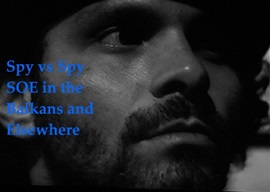 The German Blitzkrieg victories in the spring and early summer of 1940 and the Italian entry into the war in June deprived SIS (MI6) of its stations in Oslo, Copenhagen, Paris, Rome, Brussels and The Hague. By the spring of 1941 all the Balkan stations had been forced to retreat to Istanbul. The German war effort was believed to be critically dependent on two imports, Swedish iron ore and Romanian oil and it was these which formed the main targets for SIS’s Section D’s sabotage schemes.
The German Blitzkrieg victories in the spring and early summer of 1940 and the Italian entry into the war in June deprived SIS (MI6) of its stations in Oslo, Copenhagen, Paris, Rome, Brussels and The Hague. By the spring of 1941 all the Balkan stations had been forced to retreat to Istanbul. The German war effort was believed to be critically dependent on two imports, Swedish iron ore and Romanian oil and it was these which formed the main targets for SIS’s Section D’s sabotage schemes.
Watchwords
Spy vs Spy
An overview of some of the best writers of espionage and their books! (Plus a little background)
On
6 July 1940, Churchill gave the brash, dynamic Labour politician, Hugh Dalton, minister of economic warfare in Churchill’s coalition government, control over ‘a new instrument of war’, which was christened the Special Operations Executive
(SOE). SIS did not take kindly to losing its sabotage department Section D and its near-monopoly of clandestine operations overseas.
‘Though some of the rivalry
between SIS and SOE abated as the war progressed, the conflict of interest between them could never be completely resolved. Churchill became resigned to “the warfare between SOE and SIS” as “lamentable but perhaps inevitable.”’
Christopher Andrew, ‘Secret Service: the making of the British intelligence community’.
‘PSST! HAVE YOU GOT THE CRIMSON COCONUT?’
‘I’LL CRIMSON COCONUT YOU MATE IF YOU DON’T
BUGGER OFF!’
‘OH, SO SORRY – A CASE OF MISTAKEN IDENTITY.’
(OPERATIVE REPORTS
MISSION ABORTED)